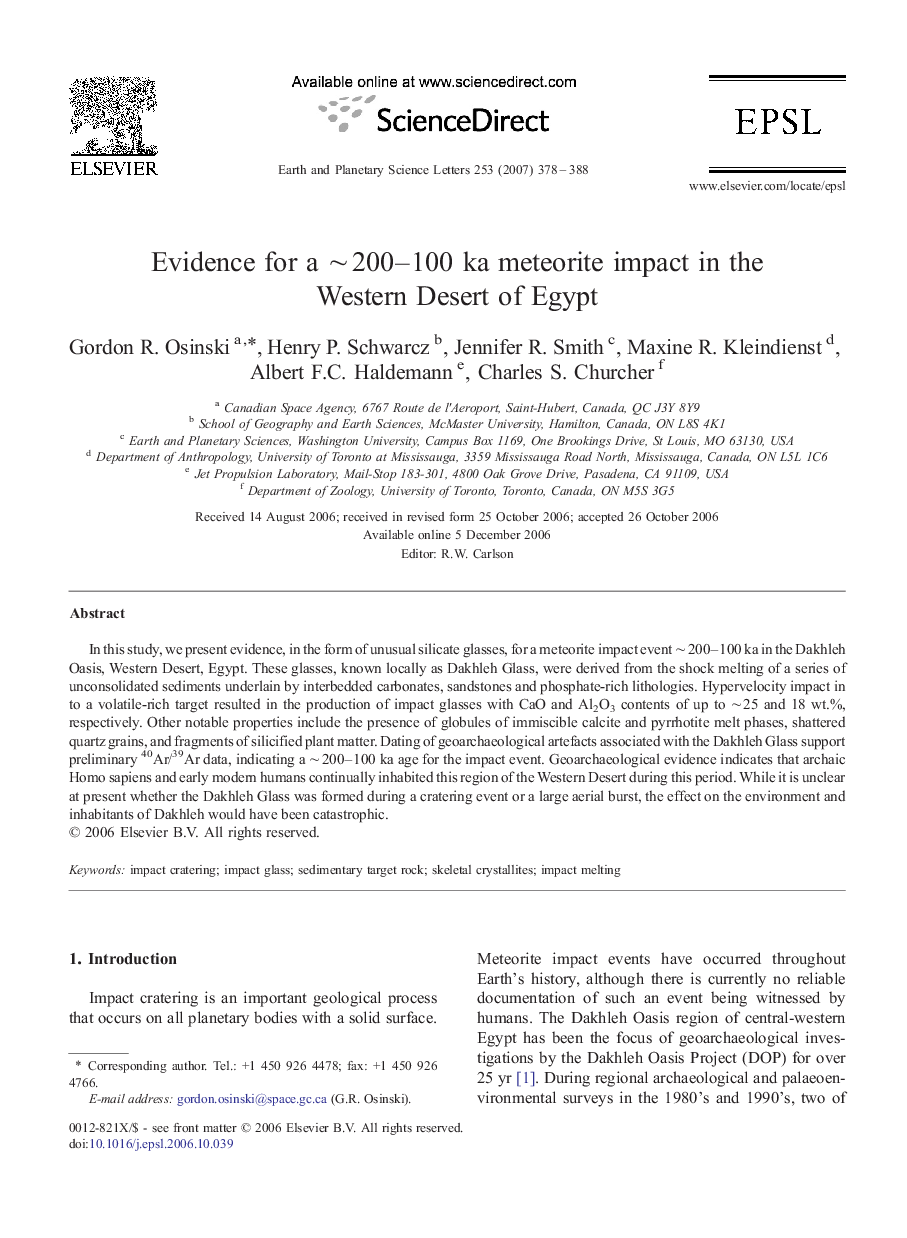| Article ID | Journal | Published Year | Pages | File Type |
|---|---|---|---|---|
| 4680546 | Earth and Planetary Science Letters | 2007 | 11 Pages |
In this study, we present evidence, in the form of unusual silicate glasses, for a meteorite impact event ∼ 200–100 ka in the Dakhleh Oasis, Western Desert, Egypt. These glasses, known locally as Dakhleh Glass, were derived from the shock melting of a series of unconsolidated sediments underlain by interbedded carbonates, sandstones and phosphate-rich lithologies. Hypervelocity impact in to a volatile-rich target resulted in the production of impact glasses with CaO and Al2O3 contents of up to ∼ 25 and 18 wt.%, respectively. Other notable properties include the presence of globules of immiscible calcite and pyrrhotite melt phases, shattered quartz grains, and fragments of silicified plant matter. Dating of geoarchaeological artefacts associated with the Dakhleh Glass support preliminary 40Ar/39Ar data, indicating a ∼ 200–100 ka age for the impact event. Geoarchaeological evidence indicates that archaic Homo sapiens and early modern humans continually inhabited this region of the Western Desert during this period. While it is unclear at present whether the Dakhleh Glass was formed during a cratering event or a large aerial burst, the effect on the environment and inhabitants of Dakhleh would have been catastrophic.
